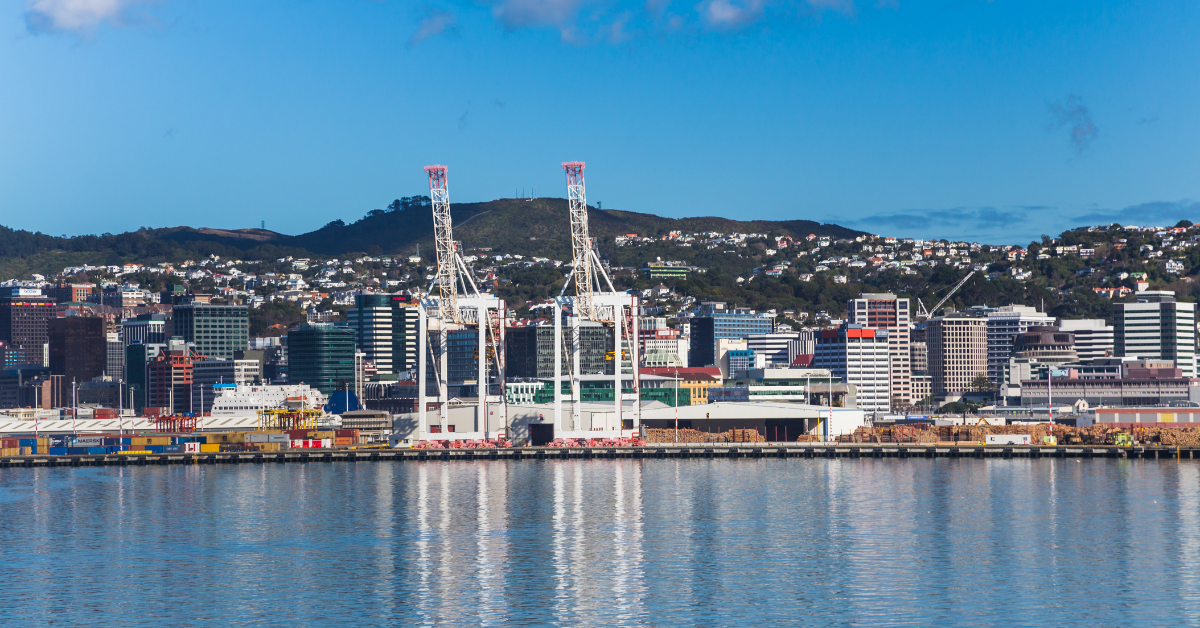Wellington, the capital of New Zealand, is usually written in katakana in Japanese, with no widely accepted kanji form. However, the way Japanese people perceive this city goes beyond language. They see Wellington as a place of nature, culture, and lifestyle balance, making it unique compared to other global capitals.
Why Wellington Has No Kanji Representation
The Basics of Transliteration of Foreign Place Names
In Japanese, most foreign place names are transliterated into katakana based on their pronunciation. The English word “Wellington” thus becomes “ウェリントン,” and it is not commonly converted into kanji in everyday use.
The Difference with “New Zealand”
The country name “New Zealand” has the kanji form 新西蘭, a remnant of the Meiji era practice of translating foreign words into kanji. Similar examples include “米国” (America) and “英国” (England). However, this practice was applied only to country names, not cities, and thus urban names remain in katakana.
Japanese Perceptions of Wellington’s Nature
Wellington, as a port city surrounded by hills and the sea, offers a unique landscape where nature and urban life coexist. To Japanese people, it conveys the image of a familiar “nature-friendly city”, while also being known as the windy capital, often called the “Windy City.”
| Feature | Japanese Perception | Example Experience |
|---|---|---|
| Coastal and hilly view | A city where nature and urban life blend | Walking along the waterfront promenade |
| Windy climate | A lively city symbolized by strong winds | Hearing the nickname “Windy City” |
| Compact city layout | Easy to navigate and live in | Daily life manageable with walking and public transport |
Wellington as a City of Culture and Arts
Wellington is both the political and cultural hub of New Zealand, and for Japanese people, it is strongly perceived as a city of film and art. Its role as the production base for “The Lord of the Rings” gave it international recognition, and among Japanese tourists, it is widely known as “a holy site for film lovers.”
Cultural institutions such as the national museum Te Papa make art and history easily accessible. The city is thus perceived as one where art is seamlessly integrated into everyday life.
| Field | Japanese Perception | Actual Features |
|---|---|---|
| Film culture | A global hub for movie production | Production of “The Lord of the Rings” |
| Museums & art | Attractive as an artistic city | Exhibits at the national museum Te Papa |
| Café culture | A refined and intellectual vibe | Unique cafés scattered throughout the city |
Impressions of Lifestyle and People
For Japanese people, Wellington has a strong reputation as a livable city. Its moderate size makes transportation and daily life efficient, and locals are often described as friendly. The presence of a vibrant café culture reinforces the image of a comfortable and relaxed lifestyle.
| Aspect of Life | Japanese Evaluation | Notes |
|---|---|---|
| City size | Compact and easy to live in | More manageable compared to larger cities |
| Local people | Friendly and approachable | Travelers are warmly welcomed |
| Daily & café culture | A city offering a pleasant lifestyle | A strong and unique coffee culture |
Wellington as a Sports City
Wellington is also known for its strong sporting culture. It is regarded as a rugby capital, with the All Blacks, New Zealand’s national rugby team, playing some of their matches there. For Japanese fans, the stadium where these games are held is a must-visit attraction.
Beyond rugby, cricket and soccer are popular, and community sports clubs play an important role in daily life. Additionally, Wellington’s hills and coastline provide excellent opportunities for running, cycling, and hiking, reinforcing its image as a city where residents lead active and healthy lives.
| Sport | Japanese Image | Characteristic Experience |
|---|---|---|
| Rugby | A national symbol of New Zealand | Watching an All Blacks match |
| Cricket | A sport reflecting British heritage | Experiencing cultural exchange at a match |
| Outdoor activity | A city of healthy lifestyles | Jogging or cycling along the waterfront |
How Japanese Compare Major New Zealand Cities
| City | General Japanese Image | Writing Style |
|---|---|---|
| Auckland | A large international city, commercial hub | Katakana only |
| Wellington | A balanced city of nature, culture, politics, and sports | Katakana only |
| Christchurch | An English-style city, peaceful student town | Katakana only |
Conclusion
Wellington has no established kanji representation, and the standard form is katakana as “ウェリントン.” By contrast, the country name “New Zealand” has the historical kanji “新西蘭,” though this applies only to the nation, not to cities.
For Japanese people, Wellington is perceived as a city where nature and urban life coexist, but also as a hub of culture, art, sports, and daily comfort. It is not only valued as a tourist destination but also seen as a city where one might want to live, connecting Japan and the world through its cultural and sporting appeal.






